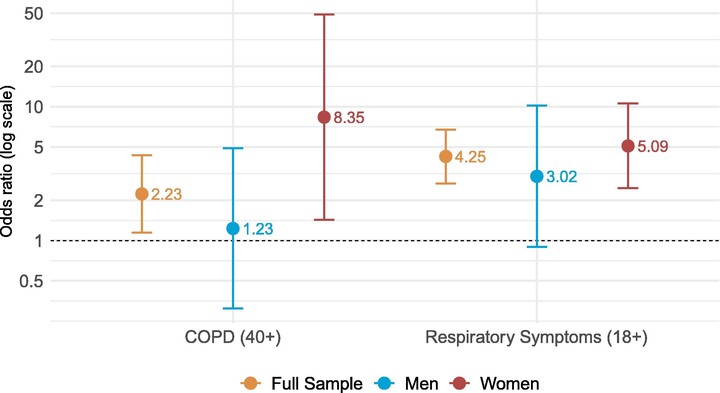Health consequences of small-scale industrial pollution: Evidence from the brick sector in Bangladesh

Abstract
Coal-fired brick kilns have spread rapidly in Bangladesh, where they are one of the largest sources of air pollution. The adverse health impacts of air pollution have been widely documented, yet there is little empirical evidence on the externalities of this important industry. We conducted a field study in Bangladesh to quantify the contribution of brick kilns to fine particulate matter (PM2.5) and estimate the association with child asthma symptoms, chronic obstructive pulmonary disease (COPD), and general respiratory symptoms. We exploit variation in the timing of brick production, seasonal wind direction, and household proximity to kilns to isolate the effects of brick manufacturing from other sources of air pollution. We find that PM2.5 is 72.3 ug/m3 higher in areas 2 km downwind from a brick kiln during the brick production season. We also find 2.2 greater odds of COPD symptoms among adults over 40 and 4.2 greater odds of respiratory symptoms among adults over 18. Among children under 5, we found greater odds of respiratory symptoms and asthma symptoms, but the results were underpowered for the smaller sample of children. Our findings suggest that existing regulations, which require that kilns be at least 1–2 km from residential areas, schools, and health facilities, are inadequate to protect nearby communities from the substantial health burden brick manufacturing imposes.